How To Check Exif Data On Photo
Pregnant amounts of subconscious data are recorded whenever you take a flick with a digital camera or a smartphone. Almost every digital image holds secrets about a photo, detailing where and when it was taken, what device took it, and more. This information fifty-fifty includes item photography details such as lens size and exposure settings.
This data is chosen EXIF metadata, and accessing it varies from device to device. While there are built-in options for viewing information technology on macOS and Windows devices, you'll need to install an app to view it on Android or iOS. If you want to view EXIF metadata on any of these platforms, here's what you need to do.
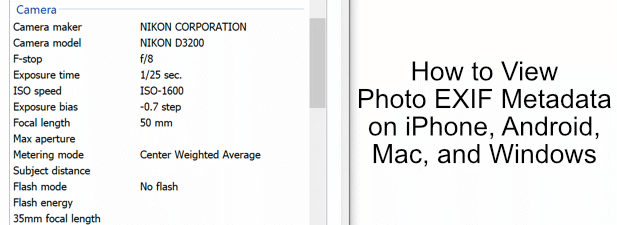
What Is EXIF Metadata?
They say a photo is worth a thou words—a statement that certainly has some truth when you lot consider digital photos. EXIF metadata is hidden technical data saved with photos taken on cameras, smartphones, and other imaging devices.
EXIF stands for Exchangeable Image File Format and acts every bit a common standard for technical image data. When y'all take a photograph on a camera or smartphone, information is stored as part of the epitome file itself, including the GPS location showing where the photo was taken (if your device has the ability to record that).

It besides includes the brand and model of the photographic camera, the image resolution, as well equally various photographic data including exposure and shutter speed. Photograph editing tools like Photoshop can immediately access this data to allow you to rapidly change certain image settings, for case.
EXIF data is usually only bachelor for JPEG or TIFF paradigm files, although like metadata is also available for other types of image files, including RAW image files.
How To Access EXIF Metadata On iPhone
3rd-party apps exist to allow yous to view EXIF metadata for images on iOS devices like your iPhone. We recommend the imaginatively-titled Exif Metadata, although alternatives similar EXIF Viewer by Fluntro are bachelor too.
The Exif Metadata app is gratis to utilize, with paid in-app purchases available to remove ads and allow yous to edit the metadata. You can install it from the iOS App Store.
- Download and install Exif Metadata for your iOS device. Once installed, open up the app and requite it permission to view your photos by pressing OK.
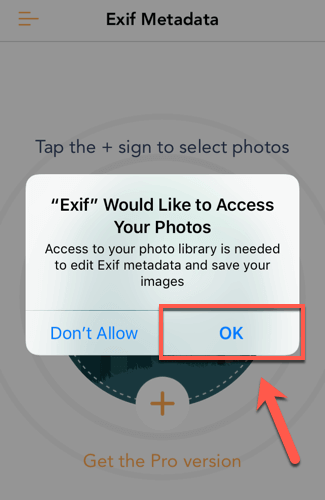
- Tap the + (plus) icon to begin selecting a photo to view in the app. In the Photo Albums menu that appears, locate a photo, so tap on information technology to open information technology in the app.
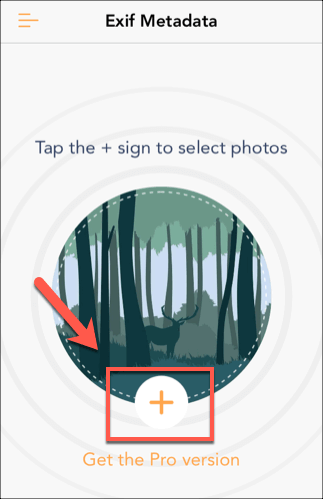
- One time y'all open up a photo, data is immediately available, with geolocation data, image size, and other detailed EXIF metadata. Scroll through to view the data you desire, and so press Dorsum once you're finished.
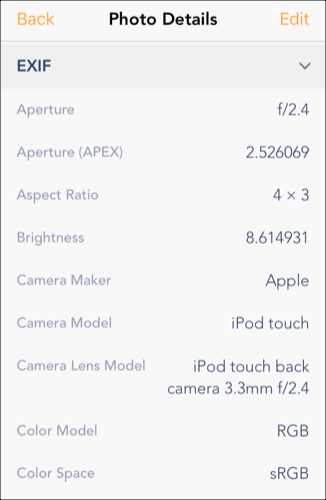
How To Access EXIF Metadata On Android
Considering of Android's fragmented nature, in that location isn't a default photograph or file view app that every device has access to, so you'll need to install a suitable app to view EXIF metadata on Android devices.
With over 500 g downloads, one of the most popular apps on Android for this purpose is Photo Exif Editor.
- To starting time, download and install Photo Exif Editor on your Android device from the Google Play Store. Once installed, open up the app and tap Photos or Browse to find and select a suitable prototype on your device.
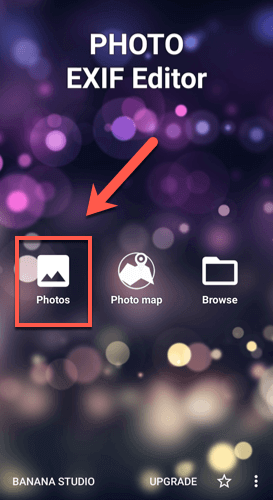
- When you select a file to view in the Photo Exif Editor app, the EXIF metadata for that file will appear. Scroll through the list to view a total set of data, including the photographic camera model, exposure and color residual settings, epitome resolution, and more.
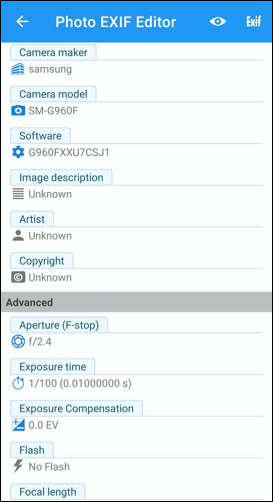
How To Access EXIF Metadata On macOS
The macOS Finder app allows you to quickly view any file metadata, showing you
when the file was created or accessed, too equally whatever other available technical data.
- Some of the more basic EXIF metadata is available by right-clicking an image and pressing Get Info to go started.
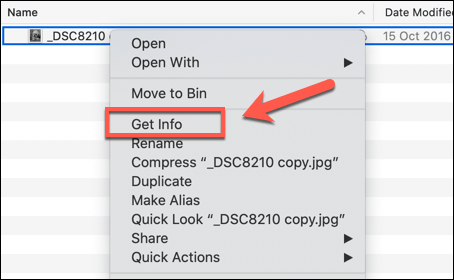
- This brings up the Info window for a file, where yous can view basic information virtually information technology. Yous may exist able to view some EXIF information under the More Info tab—click on this category if it isn't visible.
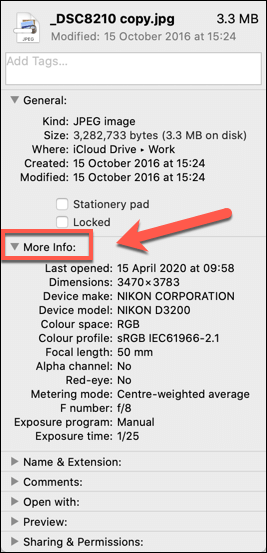
- To view the full EXIF metadata for an prototype file, you'll demand to utilise the Preview app. Right-click the image and press Open With > Preview to begin using it.
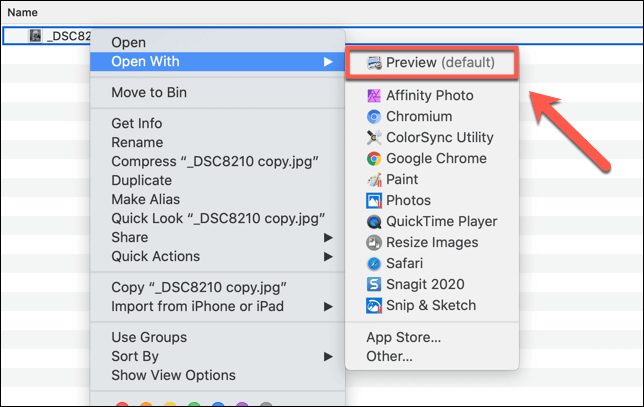
- Once Preview is open, press Tools > Show Inspector from the toolbar menu.

- In the Inspector window, press the info icon (shaped similar the alphabetic character i), then click on the EXIF tab to view the full EXIF metadata for your prototype file.
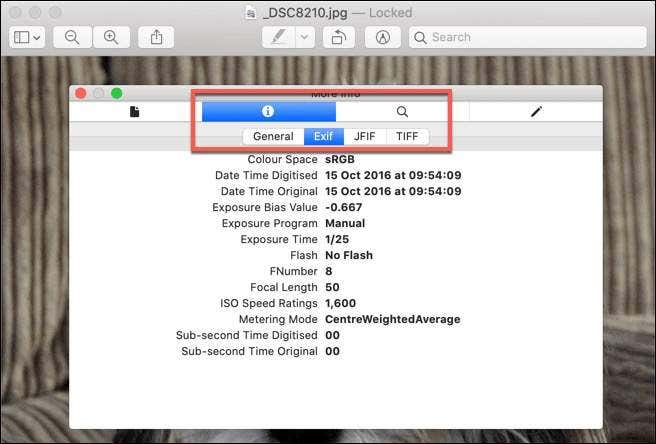
Boosted image data may also be available in the tabs on either side of the EXIF tab, depending on your camera model or image file type.
How To Admission EXIF Metadata On Windows
Using Windows File Explorer, it'southward possible to view technical data about a file from the Properties window. This expanse also displays EXIF metadata for images, offering a quick overview without installing third-party software to do then.
- To access this data, correct-click an image file in Windows File Explorer and press Properties. In the Properties window, click on the Details tab. You'll be able to view some information almost the image hither, including image resolution and size, along with some boosted details, including the camera model and settings.
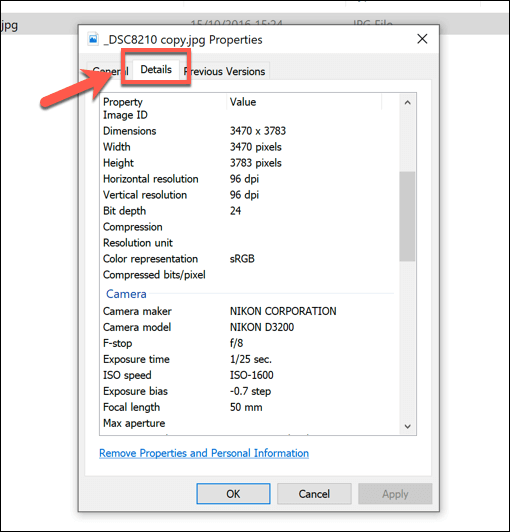
While Windows File Explorer should give you a good overview of EXIF metadata, you tin can also use third-party tools to view it in more depth. Many of these tools are at present outdated for utilize on Windows, but ane tool that even so works well is ExifDataView.
- Download ExifDataView for Windows to begin and unzip the file using Window'due south built-in unzipping tool. One time unzipped, double-click to run the ExifDataView executable file.

- To view EXIF data using ExifDataView, printing File > Open File to open up a suitable image file. Your EXIF data will appear as diverse rows in the ExifDataView window.
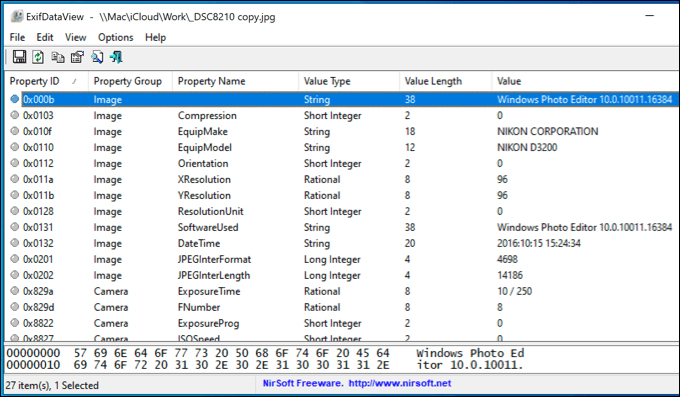
Using or Removing EXIF Metadata
EXIF metadata can aid you locate where a photo was taken, or help yous strop your photography skills by adjusting your photographic camera settings. If y'all want to upload photos to the spider web without revealing your secrets, you lot tin remove EXIF data from your photos entirely.
Saved EXIF data or not, yous can merely capture your favorite memories if y'all go along your photos in a rubber place. If you have an extensive photograph drove, you lot should consider storing your photos in the cloud to keep them safe for future generations.
Practise you lot brand use of saved EXIF metadata on images? Nosotros'd love to hear your utilize cases in the comments section below.
Do not share my Personal Data.
How To Check Exif Data On Photo,
Source: https://helpdeskgeek.com/how-to/view-photo-exif-metadata-on-iphone-mac-and-windows/
Posted by: bourgeoisspait1961.blogspot.com


0 Response to "How To Check Exif Data On Photo"
Post a Comment